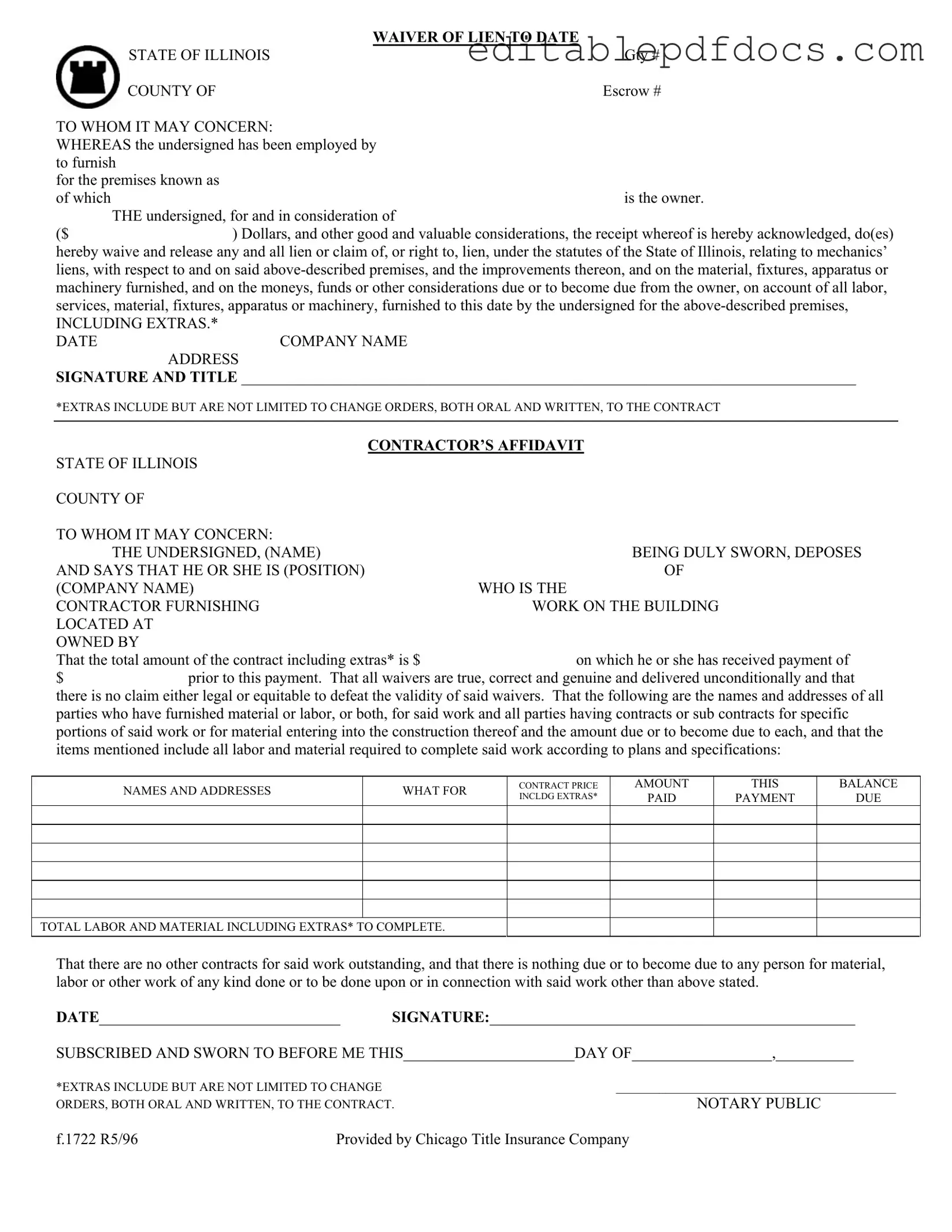The Chicago Title Waiver Format form serves as a crucial document in the construction and real estate industries, particularly in Illinois. This form is designed to protect property owners from potential mechanics' liens by allowing contractors and subcontractors to waive their rights to claim a lien against a property. It includes essential details such as the company name, the specific premises involved, and the total contract amount, including any extras. The undersigned contractor acknowledges receipt of payment and confirms that all waivers are genuine and unconditional. Furthermore, the form requires a detailed affidavit, where the contractor must disclose all parties involved in the project, the amounts due, and any outstanding contracts. This transparency helps ensure that property owners are aware of all financial obligations related to the work performed. The document also emphasizes the importance of including change orders, both oral and written, as part of the contract price. By utilizing the Chicago Title Waiver Format, stakeholders can navigate the complexities of construction financing while minimizing the risk of disputes over unpaid labor or materials.
